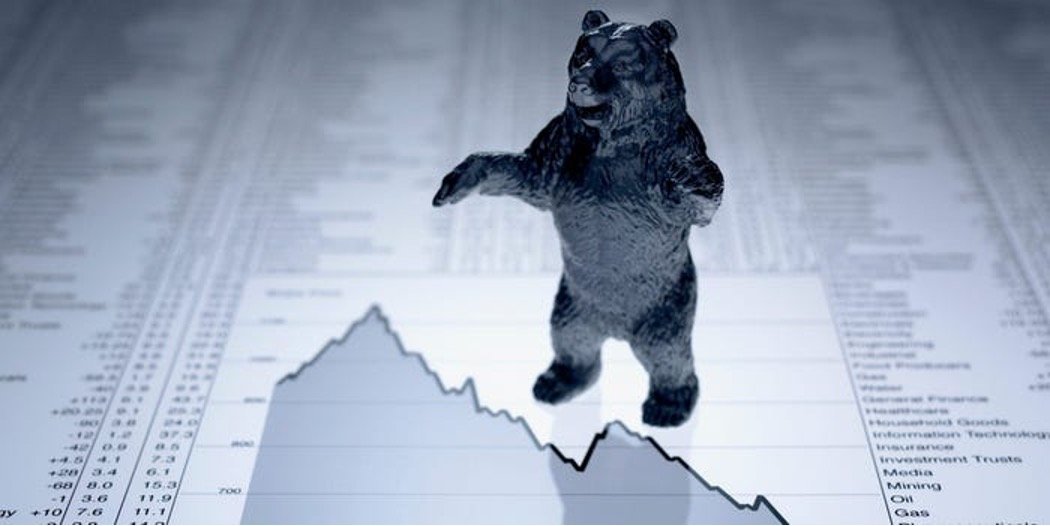Comprehensive Financial Planning includes Bull and Bear Markets
Bear Markets happen and your financial planning should accommodate for them. It is common knowledge among investors that a bull market is one in which stocks have gone up, and a bear market is one in which stocks have fallen. But what exactly defines a bear market? Let's take a look at the actual definition of a bear market and what causes it to occur.
What is a bear market?
A bear market is typically defined as a 20% drop from recent highs. The most common usage of the term is to refer to the S&P 500's performance, which is generally considered a benchmark indicator of the entire stock market.
However, the term bear market can be used to refer to any stock index, or to an individual stock that has fallen 20% or more from recent highs. For example, we could say that the Nasdaq Composite plunged into a bear market during the bursting of the dot-com bubble in 1999 and 2000. Or, let's say that a particular company reports poor earnings and its stock drops by 30%. We could say that the stock's price has fallen into bear market territory.
Economists and etymologists alike love to debate how bear markets got their name, but it most likely arose from an old proverb about how it's bad "to sell the bear's skin before one has caught the bear," meaning to unload something you didn't actually own. From there, "bears" came to be a slang term for speculators betting that prices were going to drop.
Causes of a bear market
The usual cause of a bear market is investor fear or uncertainty, but there are a multitude of possible causes.
The causes of a bear market often vary, but in general, a weak or slowing or sluggish economy, bursting market bubbles, pandemics, wars, geopolitical crises, and drastic paradigm shifts in the economy such as shifting to online economy, are all factors that might cause a bear market. The signs of a weak or slowing economy are typically low employment, low disposable income, weak productivity, and a drop in business profits. In addition, any intervention by the government in the economy can also trigger a bear market.
For example, changes in the tax rate or in the federal funds rate can lead to a bear market. Similarly, a drop in investor confidence may also signal the onset of a bear market. When investors believe something is about to happen, they will take action—in this case, selling off shares to avoid losses.
Bear markets can last for multiple years or just several weeks. A secular bear market can last anywhere from 10 to 20 years and is characterized by below-average returns on a sustained basis. There may be rallies within secular bear markets where stocks or indexes rally for a period, but the gains are not sustained, and prices revert to lower levels. A cyclical bear market, on the other hand, can last anywhere from a few weeks to several months.
Bear market examples
Bear markets are quite common. Since 1900, there have been 33 of them, so they occur every 3.6 years on average. Just to name the three most recent notable examples:
2000-2002 dot-com crash: Growing use of the internet in the late 1990s led to a massive speculative bubble in technology stocks. While all major indices fell into bear market territory after the bubble burst, the Nasdaq was hit especially hard: By late 2002, it had fallen by about 75% from its previous highs.
2008-2009 financial crisis: Due to a wave of subprime mortgage lending and the subsequent packaging of these loans into investable securities, a financial crisis spread across the globe in 2008. Many banks failed, and massive bailouts were required to prevent the U.S. banking system from collapsing. By its March 2009 lows, the S&P 500 had fallen by more than 50% from its previous highs.
2020 COVID-19 crash: The 2020 bear market was triggered by the COVID-19 pandemic spreading across the world and causing economic shutdowns in most developed countries, including the U.S. Because of the speed at which economic uncertainty spread, the stock market's plunge into a bear market in early 2020 was the most rapid in history.
Bottom Line
Investors need to understand that bear markets are part of the investment landscape and are part of a natural market cycle. Investors should be concerned with short-term investments during a bear market but can usually withstand the downward cycle for longer-term investments.
Bear markets can be painful, but overall, markets are positive a majority of the time. Of the last 92 years of market history, bear markets have comprised only about 20.6 of those years. Put another way, stocks have been on the rise 78% of the time.
Disclosure: The Standard & Poor’s 500 (S&P 500) is an unmanaged group of securities considered to be representative of the stock market in general. Indexes are unmanaged and do not incur management fees, costs, or expenses. It is not possible to invest directly in an index.
The Dow Jones Industrial Average (DJIA) is a price-weighted index of 30 actively traded blue chip stocks. Indexes are unmanaged and do not incur management fees, costs or expenses. It is not possible to invest directly in an index.
Nasdaq is a global electronic marketplace for buying and selling securities. Originally an acronym for "National Association of Securities Dealers Automated Quotations"—it was a subsidiary of the National Association of Securities Dealers (NASD), now known as the Financial Industry Regulatory Authority (FINRA). Indexes are unmanaged and do not incur management fees, costs or expenses. It is not possible to invest directly in an index.
https://www.businessinsider.com/personal-finance/what-is-a-bear-market
https://www.nerdwallet.com/article/investing/how-to-invest-during-a-bear-market
https://www.investopedia.com/terms/b/bearmarket.asp#toc-real-world-examples-of-bear-markets
https://www.fool.com/investing/how-to-invest/bear-market/



